Key competencies and transfer
This is a discussion tool for teachers. Competencies are not directly observable; they are inferred from performance in a range of contexts. Students need to be able to readily transfer their capabilities from one context to another.

About this resource
This discussion tool can help teachers explore and embed the key competencies into the local curriculum.
Key competencies and transfer
A growth in key competencies can be identified from learner actions in different contexts.
As students learn in a range of areas, they use a unique combination of knowledge, skills, attitudes, and values embodied in the key competencies specific to that context. Ākonga need to identify and understand how their growth in the key competencies can be transferred across all their learning experiences.
For example, the key competencies support the move between:
- a mathematics challenge
- a kapa haka performance
- a sporting competition
- a language learning
- a geography field trip
- a social sciences inquiry
- a science reflection.
Learning occurs in the classroom, at home with whānau, online, in sports or cultural activities, and in the workplace. Transferring learning using the key competencies means that this range of learning experiences should always be considered to be related to each other.
Kaiako and ākonga should seek ways to connect key competency development within all learning contexts. It is important that kaiako know how ākonga are developing the key competencies at home with their whānau and in community activities in order to then support this learning transfer to classroom tasks.
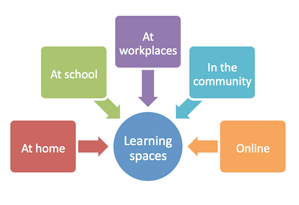
Central circle with the words 'Learning spaces'.
Five text boxes fanning circle, with the words:
At home
At school
At workplaces
In the community
Online
Kaiako should aim to make explicit the process of transferring learning across a range of experiences. Within this transfer process, it is important for kaiako to consider how key competency development is made accessible to the needs and cultural identities of all ākonga.
When they go about new learning, teachers and students can talk about the process of key competency development that they have previously experienced in other content, topics, and contexts.
A key question is: how do the attitudes learners use to overcome a conceptual challenge in one learning area relate to the attitudes they will need to overcome a different kind of challenge in another learning area?
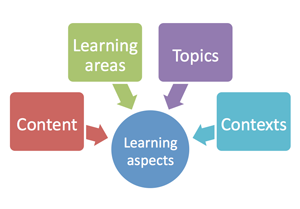
Central circle with the words 'Learning aspects'.
Four text boxes fanning circle, with the words:
Content
Learning ares
Topics
Contexts
Helena Baker works with her community to design their Marautanga and determine how elements of the curriculum align with the needs of whānau, ākonga, and the kura.
The framework they developed also demonstrates transfer in teaching and learning.
Framework: Key features
There are three key features that emphasise learning transfer in the framework:
- Ko Ruahine nga pae maunga
- The eight bands of rain
- Nga tuna
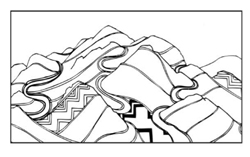
Ko Ruahine nga pae maunga
The focus on the Ruahine Ranges in the Tākaro story symbolises where ākonga can look out towards the sea and view the endless possibilities for their future. This demonstrates the idea of transfer. It shows how learning serves immediate purposes and will also be applied in both known and unknown contexts in the future.
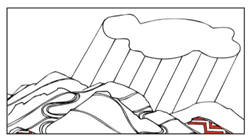
The eight bands of rain
The eight bands of rain represent the learning areas that feed the pae maunga and awa and also demonstrate transfer. Competencies developed in learning areas can be used to support learning in other contexts. This requires kaiako to talk explicitly about how ideas, skills, attitudes, and values explored in science are similar or different from those in the social sciences.
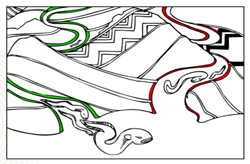
Nga tuna
Helena talked about the tuna representing tamariki in the Te Kura o Tākaro framework. They are immersed in the waters that nurture and help them grow. Tuna travel across land and water to get to other awa in the Pacific Islands. This idea that you can move across awa also represents key competency transfer. Students being aware of when and how they use the skills and values in the key competencies means they can support learning in new learning areas.
Transferring competencies from one context to another requires teachers and students to:
- explicitly consider the relationship between their learning and activity in one context and the skills required in a new learning experience
- identify how similar or different the conditions are in learning experiences
- draw on their prior experience of using competencies to support their learning in new contexts
- consider how the knowledge, skills, attitudes, and values used in other activities will help learning in the current learning area.
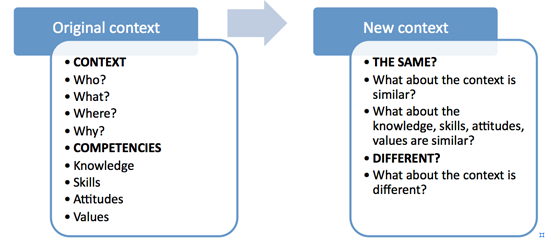
'Original context' box has the words:
CONTEXT
Who?
What?
Where?
Why?
COMPETENCIES
Knowledge
Skills
Attitudes
Values
An arrow connects 'original context' box with 'new context' box.
'New context' box has the words:
THE SAME?
What about the context is similar?
What about the knowledge, skills, attitudes and values are similar?
DIFFERENT?
What about the context is different?


